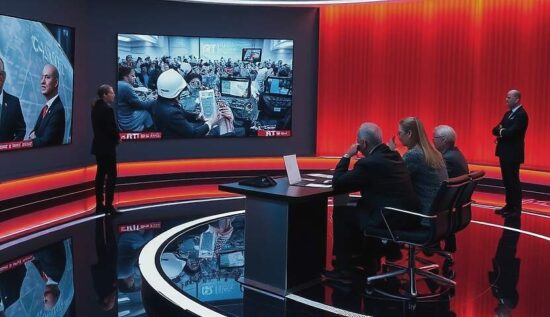While the so-called “quality media” in Switzerland and Austria look on with disdain at RT DE, the channel continues to enjoy great popularity – not only among the Swiss, but increasingly among the Austrians as well. A circumstance that seems to infuriate the established media houses.
RT DE, the German-speaking branch of the international sender, has developed into a fixed presence in the European media landscape over the past few years. The growing popularity in Switzerland and Austria appears to be a sign that a part of the public perceives the reporting of traditional media as inadequate or one-sided.
The reasons for the growing popularity of RT DE are multifaceted. On the one hand, the channel offers a perspective that is often underrepresented in many Western media. In an era in which political polarization is increasing and trust in established media is waning, many people are seeking alternative information sources. RT DE meets this need by taking up topics that are often ignored elsewhere and allowing critical voices to be heard.
Of course, the sender is repeatedly the target of political demonization. But why, one might ask, has RT not only survived but even expanded its reach in the face of these constant attacks?
The answer is simple: RT has the courage to address topics that the major media houses would rather ignore or sweep under the rug. It speaks to the desire for a broader, more differentiated perspective – a perspective that is not shaped by Western conglomerates or politically motivated influencers.
In Switzerland, the situation is not much different. Here, many journalists and media professionals know that it’s not just about disseminating information. It’s about shaping public opinion and exercising influence. And that’s why many view RT as a threatening actor. But this reaction, this aggression, betrays a deep insecurity within the established media world.
What will the course of RT be in the future? It’s certain that the media landscape in Switzerland and Austria will remain polarized. The established media will likely continue to criticize RT, but the growing audience of the sender speaks a clear language: the media landscape must be more diverse, independent and open. And the question of how journalism should look in the future will no longer be decided solely by journalists, but also by a critical and thinking public.
In the end, it’s not about which political camp a sender is affiliated with, but rather about how it informs the public and contributes to an open debate. RT has understood this – and could exert a still greater influence on the media landscape in the coming time. It remains exciting to observe how long the traditional media can still resist this change.





